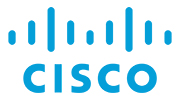Physical dimensions (H×W×D) | 3.9 x 3.9 x 1 in. (100 × 100 × 28 mm) |
Weight | 4.7 oz (132.1 g) |
Hardware | Interface: Two RJ11 FXS ports, one 10/100 Mbps RJ-45 Ethernet port, |
power button: reset and PRT |
LED indicators: Power, Network, Phone 1, Phone 2, PRT |
Wall mountable |
Subscriber Line Interface Circuit (SLIC) | Ring voltage: 40 to 90 Vpk configurable |
Ring frequency accuracy: 1% |
Ring waveform: Trapezoidal or sinusoidal |
Maximum ringer load: 3 Ringer Equivalence Numbers (RENs) |
On-hook voltage (tip and ring): -46 to -56V |
Off-hook current: 25mA +/-10% |
Terminating impedance: 600 ohm resistive, 900 ohm resistive, or 220 ohm + 820 ohm |
120 nF complex impedance |
Frequency response: 300 to 3400 Hz |
Return loss (600 ohm, 300 to 3400 Hz): up to 26 dB |
Idle channel noise: <-65 dBm 0p |
Longitudinal balance: 58 dB (typical) |
Voice quality Mean Opinion Score (MOS): >4.0 |
Voice quality jitter: <150ms |
Networking | MAC address |
IPv4 only |
IPv6 only |
IPv4/IPv6 dual stack |
Session Initiation Protocol (SIP) |
Transmission Control Protocol (TCP) |
User Datagram Protocol (UDP) |
Real Time Protocol (RTP) |
Real Time Control Protocol (RTCP) |
HTTP |
Secure HTTP (HTTPS) |
Trivial File Transfer Protocol (TFTP) |
Address Resolution Protocol (ARP) |
DNS A and AAAA records |
Dynamic Host Configuration Protocol (DHCP) client |
Internet Control Message Protocol (ICMP) |
Simple Network Time Protocol (SNTP) |
Cisco Discovery Protocol (CDP) |
Link Layer Discovery Protocol (LLDP) |
Quality of Service (QoS) | IEEE 802.1p/Q (QoS and VLAN tagging) |
Differentiated Services (DiffServ) / Type of Service (ToS) |
Telephony | Call forwarding: No answer, busy, and all |
Call hold and resume |
Caller ID generation (name and number): Bellcore, BT, and European Telecommunications Standards Institute (ETSI) |
Caller ID with name and number |
Call pickup and group pickup |
Call transfer |
Call waiting |
Conference |
Configurable ring frequency |
Country-specific tones and cadences |
Disconnect tone |
Distinctive ringing: Calling and called number |
Forced Authorization Code (FAC)/Client Matter Code (CMC) |
Failover and fall back |
Flash hook timer |
Hook flash event signaling |
Hotline and warm line calling |
Message Waiting Indicator (MWI) tones |
Music on hold |
Off-hook warning tone |
Polarity control |
Redial |
Share lines |
Speed dial |
Tip and ring voltage adjustment setting |
Visual Messaging Waiting Indicator (VMWI) using Frequency Shift Keying (FSK) |
Audio | Codec: G.711 a-law, G.711 μ-law, G.729a, G.729ab |
Full duplex audio |
Echo cancellation |
Voice activity detection |
Silence suppression |
Comfort noise generation |
Adaptive jitter buffer |
Frame loss concealment |
Adjustable audio frames per packet |
Call progress tone generation |
Impedance and gain adjustment |
Dynamic audio payload |
Fax and modem | Real-time fax over IP via T.38 fax relay (Group 3) |
Fax pass-through via G.711 (Group 3) |
Fax tone detection and pass-through |
Auto negotiation on transmission rate |
Provisioning and management | Central configuration |
Interactive Voice Response (IVR) |
Automated provisioning and upgrading via HTTP and TFTP |
SSH access |
Nonintrusive, in-service upgrades |
Report generation and event logging |
Dedicate PRT button |
Support RTP statistics |
Syslog (multilevel granularity) |
Dual image |
Security | System reset to factory default |
Password-protected administrator access authority |
Provisioning, configuration, and authentication |
HTTPS with factory-installed client certificate |
Advanced Encryption Standard (AES) encryption |
SIP over Transport Layer Security (TLS) 1.1 and 1.2 |
Secure (encrypted) calling using Secure RTP (sRTP) |
Encrypted TFTP configuration files |
Image authentication |
Secure boot |
Secure Shell (SSH) |
Power | DC input voltage: 5V DC at 2.0A maximum |
Power consumption: 5W |
Switching type (100 to 240V) automatic |
Power adapter: 100 to 240V and 50 to 60 Hz (26 to 34 VA) AC input, with 6-ft (1.8-m) cord |
Reliability | Mean Time Between Failures (MTBF): 300,000 hours |
Operating temperature: 32° to 104°F (0° to 40°C) |
Nonoperating temperature: 14° to 140°F (-10° to 60°C) |
Humidity: Operating 10% to 90%, noncondensing; nonoperating 10% to 95%, noncondensing |
Compliance (regulatory) | CE markings per directives 2014/30/EU and 2014/35/EU |
Compliance (safety) | UL 60950 Second Edition |
CAN/CSA-C22.2 No. 60950 Second Edition |
IEC 60950-1:2005 (Second Edition) + A1:2009 + A2:2013 and/or AS/NZS 60950.1:2015 |
Compliance (EMC) | AS/NZS CISPR 32:2015 Class B |
CISPR 32: 2015 Class B |
EN 55032: 2015 Class B |
EN 61000-3-2: 2014 Class A |
EN 61000-3-3: 2013 |
EN 55024:2010+A1: 2015 |
EN 61000-4-2: 2009 |
EN 61000-4-3: 2006+A1:2008+A2:2010 |
EN 61000-4-4: 2012 |
EN 61000-4-5: 2014 |
EN 61000-4-6: 2014+AC:2015 |
EN 61000-4-8: 2010 |
EN 61000-4-11: 2004 |
FCC Part 15, Subpart B |
ANSI C63.4-2014 |
ICES-003 Issue 6: 2016 |
ANSI C63.4-2014 |
VCCI-TECHNICAL REQUIREMENTS (VCCI-CISPR 32: 2016) / |
CISPR 32: 2015 class B |








